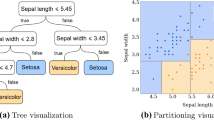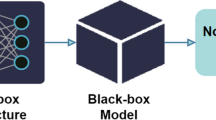Abstract
Inductive learning is an important subject in artificial intelligence. As a concern of theoretical computer science, this paper investigates the complexity of induction of structural descriptions which is fundamental to inductive learning. The general complexity is derived, and a way of approaching the induction, namely, computing the maximal common generalizations by pairing, is also presented with its inherent complexity.
A group ofNP-complete andNP-hard problems are introduced when showing the complexities.
Similar content being viewed by others
References
P. R. Cohen and E. A. Feigenbaum, The handbook of artificial intelligence, Vol. 3, (Eds.) Kaufmann, Los Altos, Calif., 1982.
T. G. Dietterich and R. S. Michalski, Inductive learning of structural descriptions,Artificial Intelligence,16 (1981), 257–294.
T. G. Dietterich and R. S. Michalski, Learning and generalization of characteristic descriptions, IJCAI-79, 223–231.
F. Hayes-Roth and J.McDermott, Knowledge aquisition from structural descriptions, IJCAI-77, 356-62.
F. Hayes-Roth and J. McDermott, An interference matching technique for inducing abstractions,C. ACM,21:5(1978), 401–410.
E. Horowitz and S. Sahni, Eds., Fundamentals of computer algorithms, 1978.
R. S. Michalski, Pattern recognition as rule-guided inductive inference,IEEE Trans. Pattern Analysis and Machine Learning,2: 4(1980).
R. S. Michalski, Towards computer-aided induction, IJCAI-77, 319–320.
R. S. Michalski, A theory and methodology of inductive learning,Artificial Intelligence,29 (1983), 111–161.
T. M. Mitchell, Generalization as search,Artificial Intelligence,18 (1982), 203–226.
S. A. Vere, Induction of concepts in the predicate calculus, IJCAI-75, 281–287.
S. A. Vere, Induction of relational productions in the presence of background information. IJCAI-77, 349–355.
S. A. Vere, Inductive learning of relational productions, in: D. A. Waterman and F. Hayes-Roth, Eds., Pattern-Directed Inference Systems, 1978.
P. H. Winston, Learning structural descriptions from examples, Ph. D. thesis, Report AI-TR-231, Art. Int. Lab., MIT, Cambridge (1970).
P. H. Wnston Ed., Artificial Intelligence, Reading, Mass, Addison-Wesley, 1977.
Author information
Authors and Affiliations
Additional information
This is a partial fulfilment of the author's master degree.
Rights and permissions
About this article
Cite this article
Lu, X. On the complexity of induction of structural descriptions. J. of Comput. Sci. & Technol. 2, 12–21 (1987). https://doi.org/10.1007/BF02943313
Received:
Revised:
Issue Date:
DOI: https://doi.org/10.1007/BF02943313




